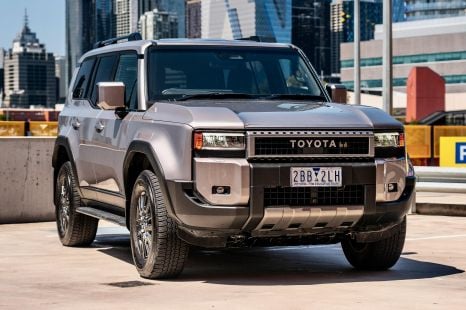

Max Davies
2025 Toyota Prado GXL review
2 Months Ago
We've waited a long time, but the new Toyota LandCruiser has finally started arriving in Australia. How does the GR Sport stack up?
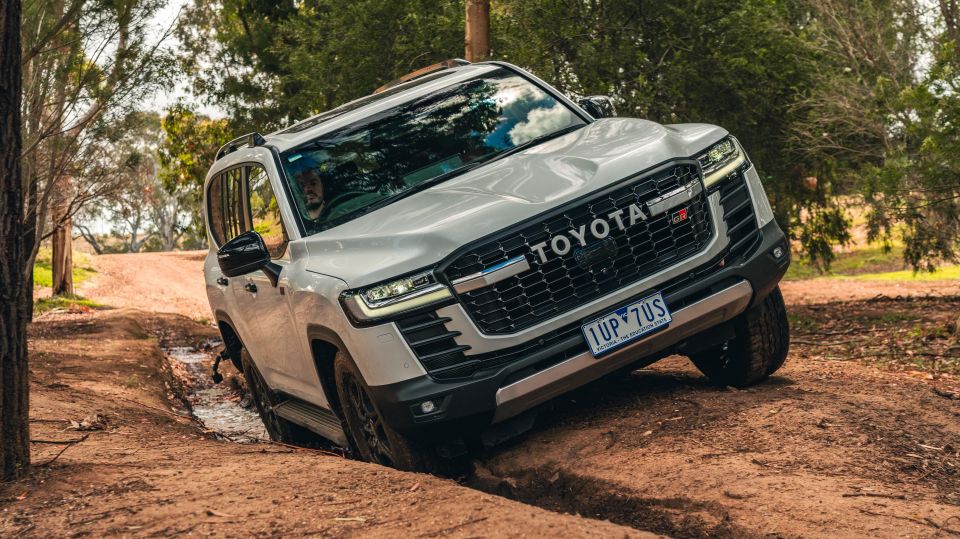
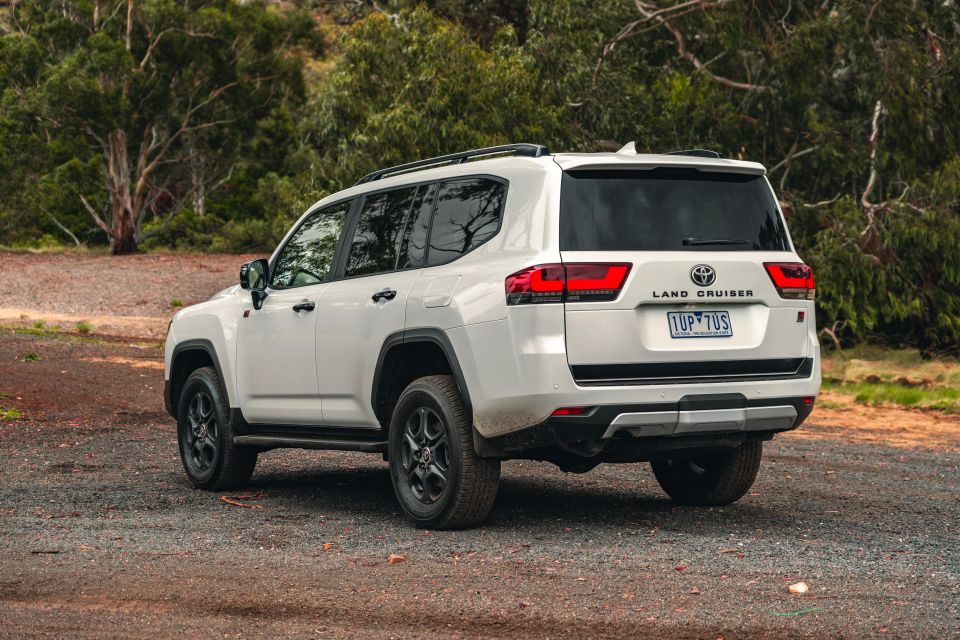

Contributor
New from
$89,990
excl. on-roads

Contributor
New from
$89,990
excl. on-roads


Contributor
New from
$89,990
excl. on-roads

Contributor
New from
$89,990
excl. on-roads
Quickly see how this car stacks up against its competition. Select any benchmark to see more details.
Where expert car reviews meet expert car buying – CarExpert gives you trusted advice, personalised service and real savings on your next new car.
It’s a new Toyota LandCruiser. What more introduction do you need?
There have been plenty of big car launches in Australia during 2021, but few are bigger than the LandCruiser.
The 200 Series earned a fearsome reputation for going anywhere, in any conditions, with essentially anything hitched to the back of it, so replacing it is no small job. The 300 Series you see here needs to be every bit as durable as the 200 Series, but offer a more refined drive, a more powerful engine, and better fuel economy.
The GR Sport also needs to bring a more overt sense of off-road toughness to the party. It was developed as a base vehicle for the Dakar Rally and features its own unique look, with the Toyota wordmark emblazoned across the gloss-black mesh grille, plus black 18-inch alloy wheels within black wheel arches.
Update, 24/12 10:00AM – Toyota Australia is investigating a knocking noise from the steering area, which CarExpert has experienced in all three LandCruiser 300 Series vehicles tested. Read more here.
It stands out in traffic, that’s for sure. LandCruiser 200 owners stop and stare, and more than one actually wound down their window to ask what it’s like at a set of traffic lights.
The GR Sport needs to tick a lot of boxes. First up, it needs to live up to the lofty expectations levelled at anything with a LandCruiser badge on its tailgate, and that alone is no mean feat.
Secondly, it needs a distinctive character to match its Dakar-inspired looks on the outside.
Perhaps most importantly though, it needs to justify its price tag, which occupies a realm usually off-limits to the Toyota brand.

The 2022 Toyota LandCruiser GR Sport on test here is second from the top in the sprawling range, and is priced at $137,790 before on-road costs. That’s a lot of cash for a Toyota, although you can spend $1000 more on the Sahara ZX.
At that price, it goes head-to-head with some very stiff competition. If it’s luxury you want, the Range Rover Sport D300 HSE ($141,706) is a smaller alternative with some off-road credibility.
The LandCruiser is more focused on life off-road, but in the SUV world around $140,000 will also buy you a Mercedes-Benz GLE400d or Audi Q7 55 TFSI with plenty of change, or even a BMW X5 M50i Pure with its burbling V8 engine.
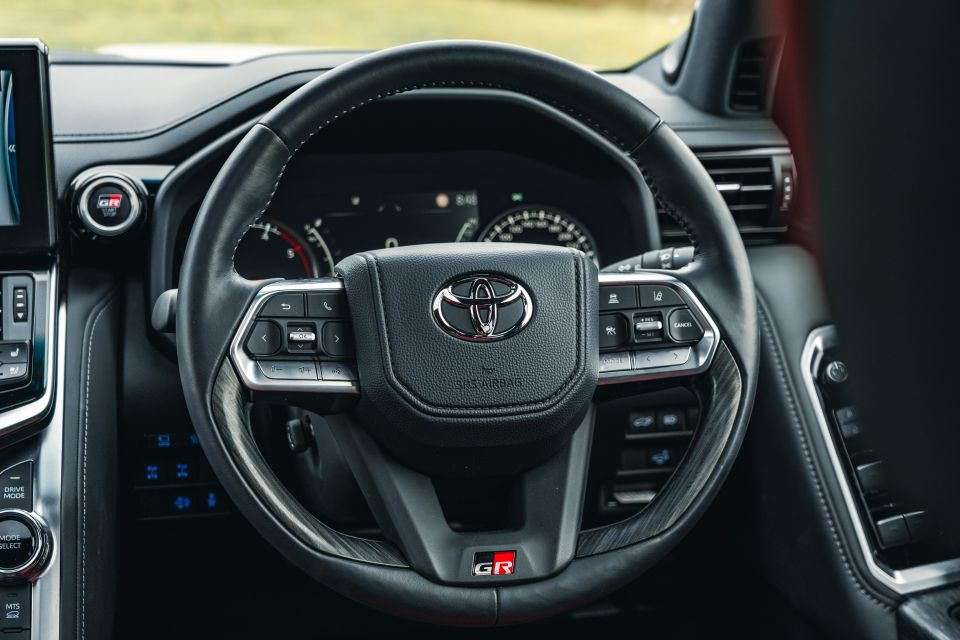
If it’s off-roading and towing you’re more concerned with, the body-on-frame Nissan Patrol significantly undercuts the LandCruiser based on price. The range-topping Patrol Ti-L is priced at $94,115 before on-roads.
Sure, it doesn’t have the same tough looks or quite as much clever off-road technology, but $40,000 buys you a lot of accessories at ARB.
2022 Toyota LandCruiser 300 Series pricing:
All prices exclude on-road costs.
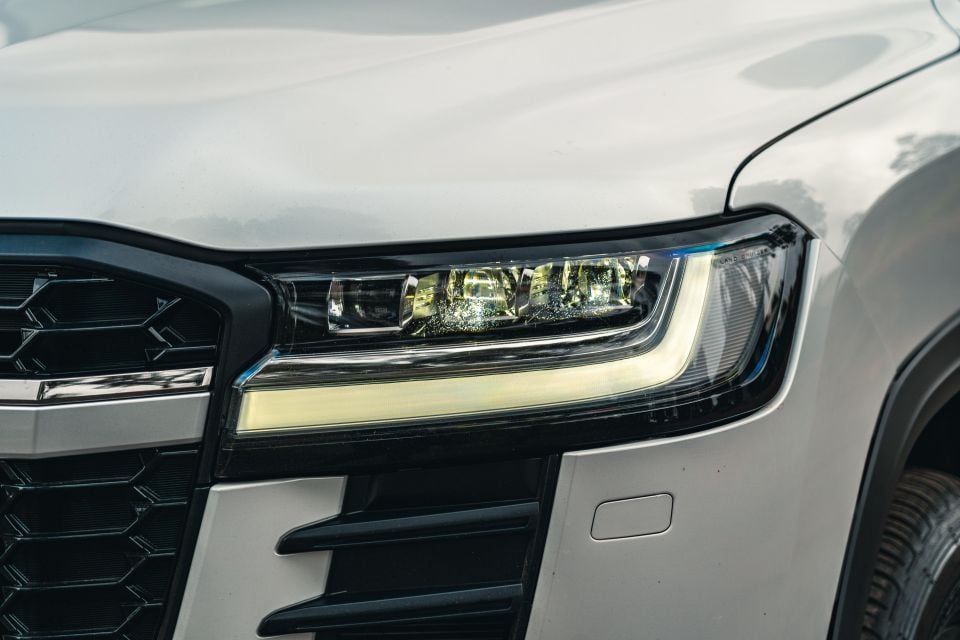
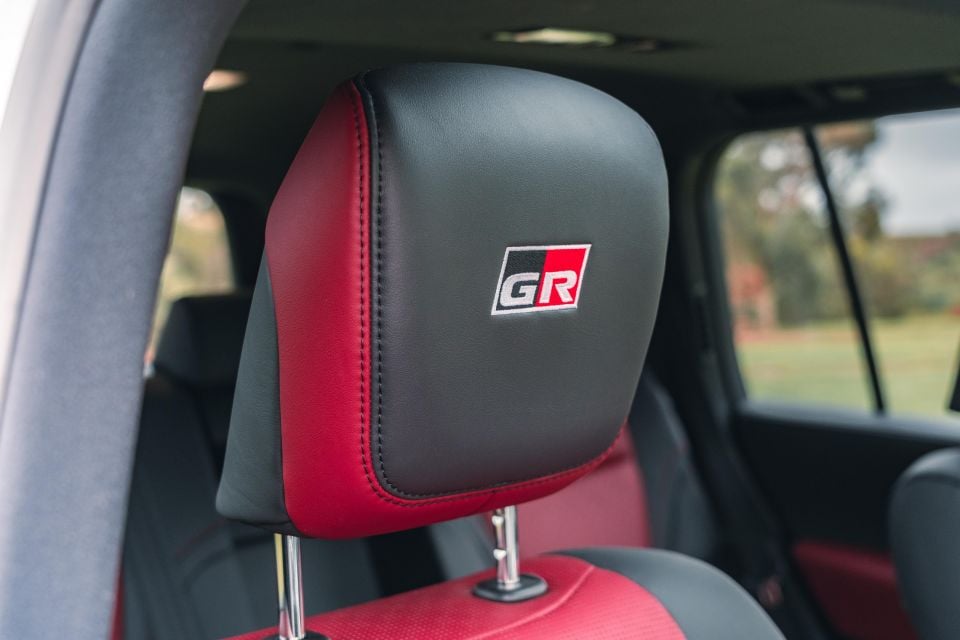
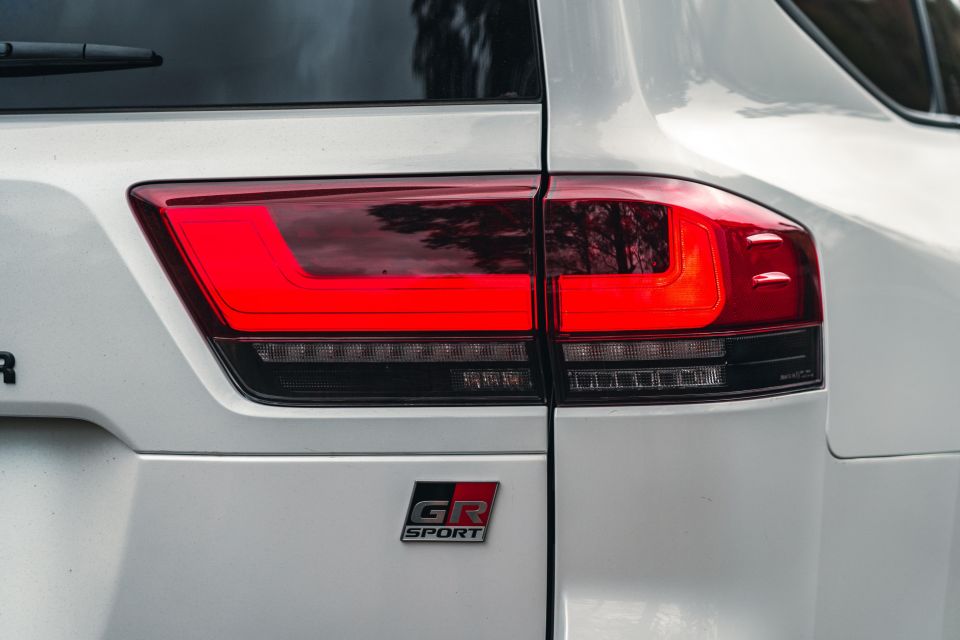
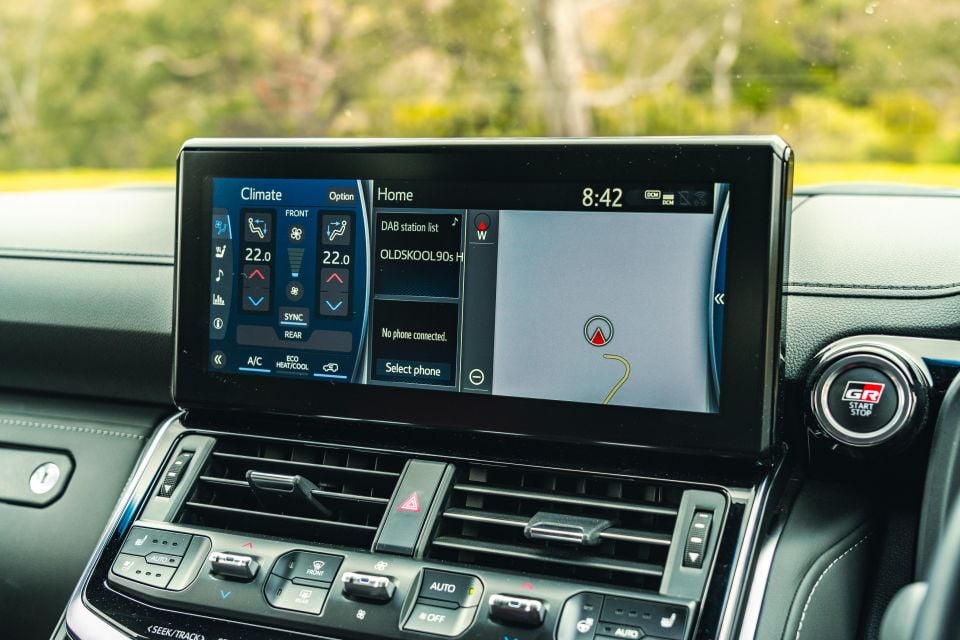
LandCruiser GR Sport highlights:
That’s atop the following equipment included across the LandCruiser range. The base GX gets:
LandCruiser GXL adds:
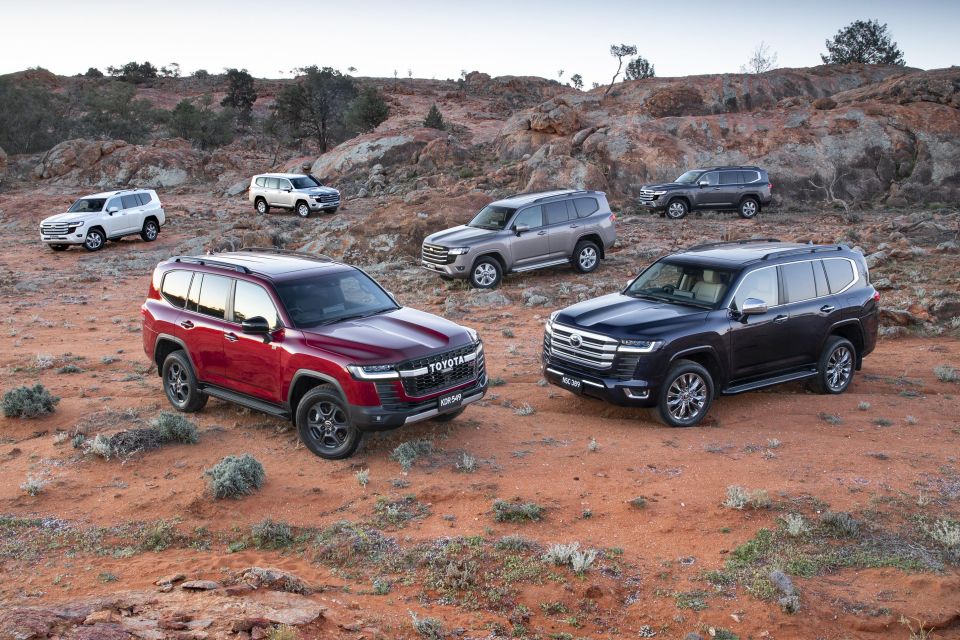
LandCruiser VX adds:
LandCruiser Sahara adds:
The flagship LandCruiser Sahara ZX adds:
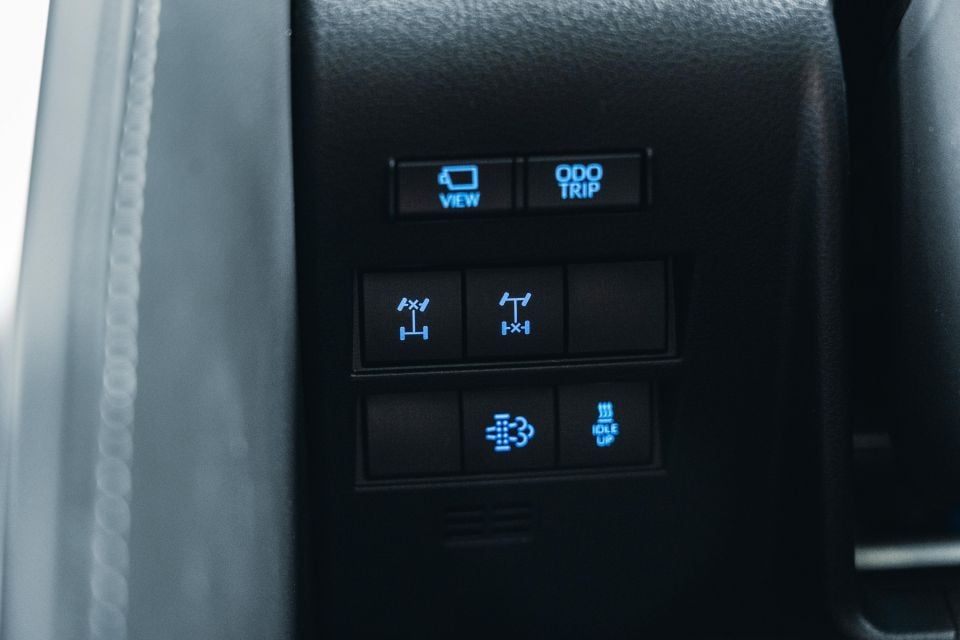
The 2022 Toyota LandCruiser 300 hasn’t been crash tested by ANCAP or Euro NCAP.
The whole range will feature the following active safety features:
Lane Trace Assist, blind-spot monitoring, road-sign assist, and rear cross-traffic alert are offered on the LandCruiser GXL and above.

Although it’s still identifiably a LandCruiser, the cabin of the 300 Series has taken a big step forward from that of its predecessor.
What hasn’t changed, though, is the fact you could happily spend hours behind the wheel of the LandCruiser. The driver and passenger sit in well-stuffed armchairs trimmed in what feels like quality leather, and there’s enough support to prevent your bum going numb on long highway runs.
The seats are well bolstered, but also have enough space for burly tradies or grey nomads who’ve been in a good paddock to not feel like they’re squeezed in. The heating and cooling are both welcome, as is the fact you can flick them into automatic and let them decide what the correct setting is based on your climate control.
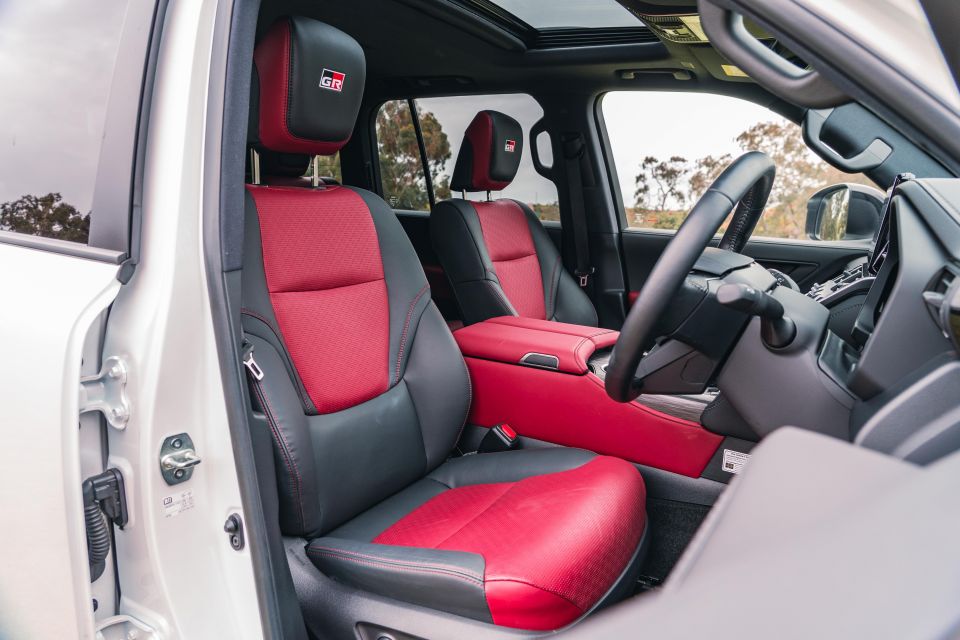
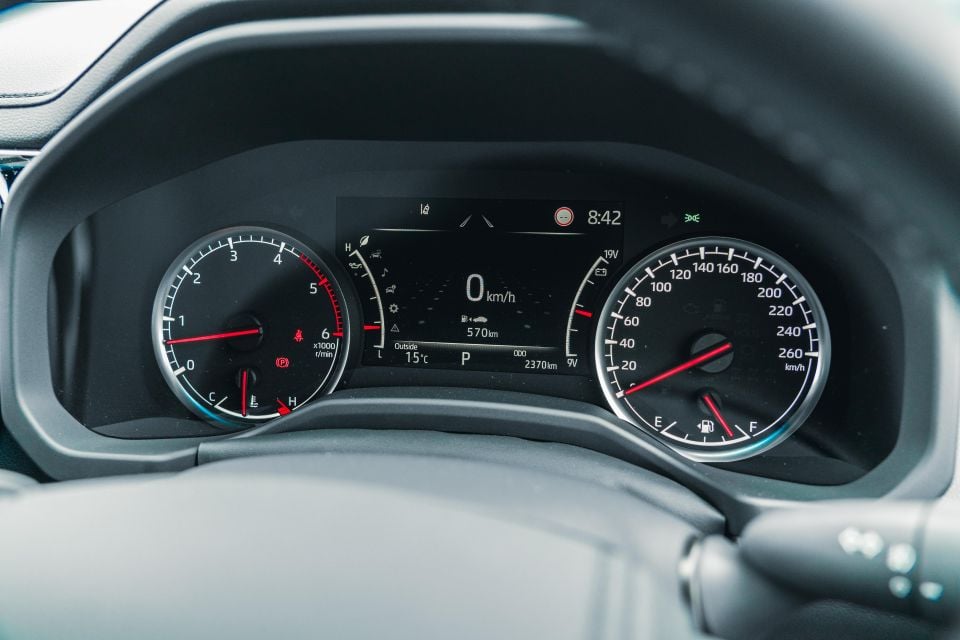
Facing the driver is a pleasingly chunky leather-wrapped steering wheel, along with analogue dials flanking a pretty basic colour trip computer. It’s able to show off-road data, your speed, or fuel economy information, but it’s not far removed from the setup on offer in a Corolla or Camry, which is disappointing given the price.
The idea of a 12.3-inch central touchscreen display is a good one, and shows Toyota is aware it needs to offer better infotainment than was on offer in the last LandCruiser. It’s a shame, then, the infotainment software on offer is just a windowed version of the same system you get in every other Toyota, with a customisable sliding panel filling up the screen next to it.
It’s a functional system, but we’ve complained about its slightly sluggish responses and average graphics in our recent RAV4 and Kluger reviews, so it sticks out like a sore thumb in the LandCruiser. It just isn’t good enough in a car nudging $140,000, simple as that.
Smartphone mirroring is wired, although you get a cheap-looking factory navigation system for when there’s no phone reception.

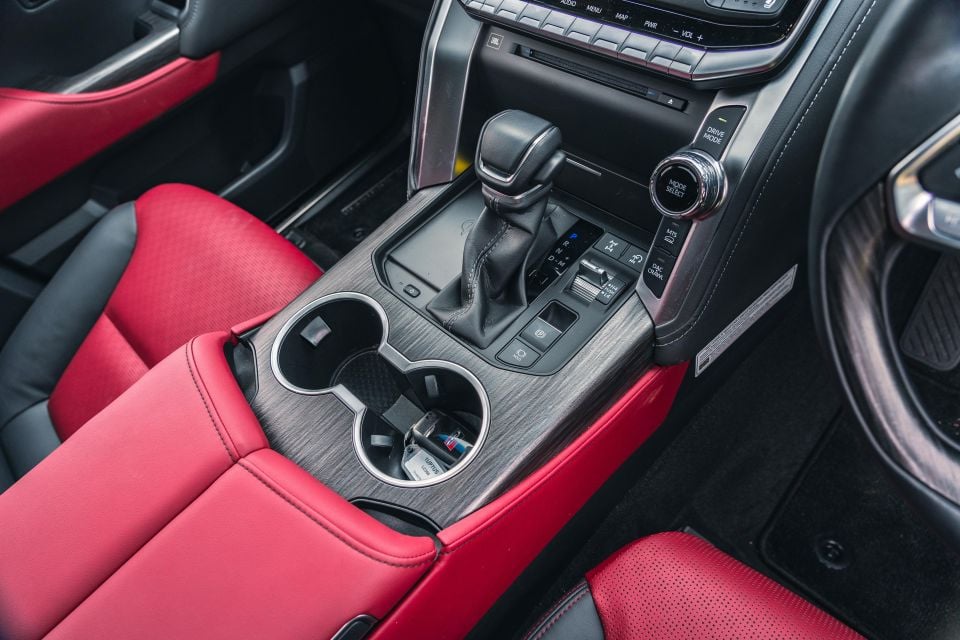
We know there’s a better system out there – the significantly cheaper RAV4 Prime gets a new infotainment setup in the USA, as does the Tacoma truck. It’s time for Toyota to roll it out more broadly, because it’s being left behind by its mainstream rivals, let alone the luxury brands with which LandCruiser is priced in line with.
On the plus side, the new dashboard blends a chunky design with decent tactility. It’s also logically laid-out and easy to use, even if you’ve got big hands or bad eyesight. Toyota has hidden the differential lock buttons down by the driver’s left knee, though, rather than grouping all the off-road controls in one place on the dash.
There’s a cool box beneath the central armrest with space for a pair of water bottles, and the door pockets are massive. The wireless phone charger on the transmission tunnel is far more usable than the tacked-on pad in the LC200, too.
The second row is a mixed bag. With dual USB-C charge points, a fold-down central armrest, air vents, and a separate climate control pod back there, the kids are going to be comfortable on long road trips. The upright profile and massive windows mean the view out is panoramic, too.
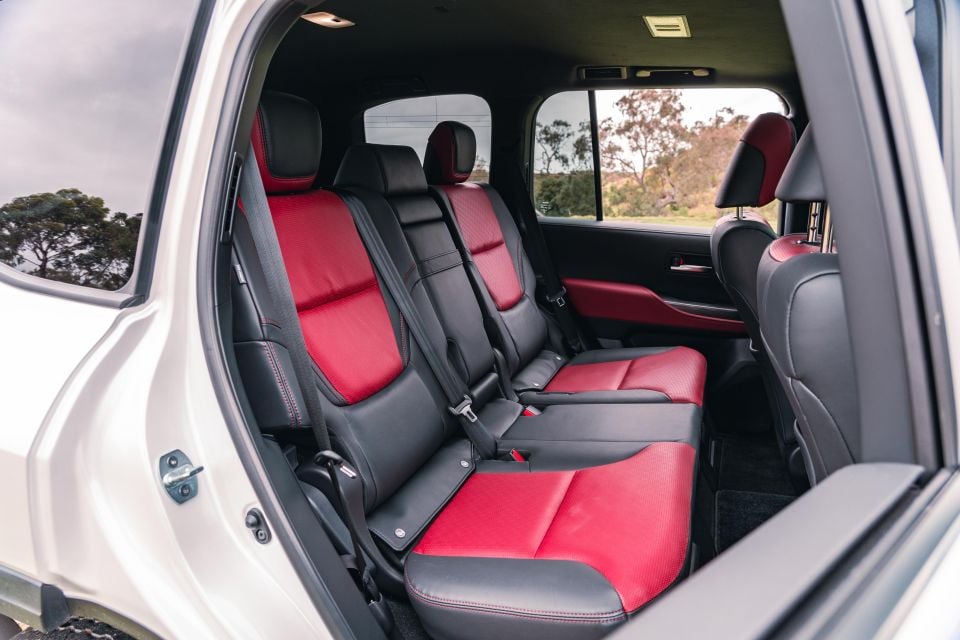

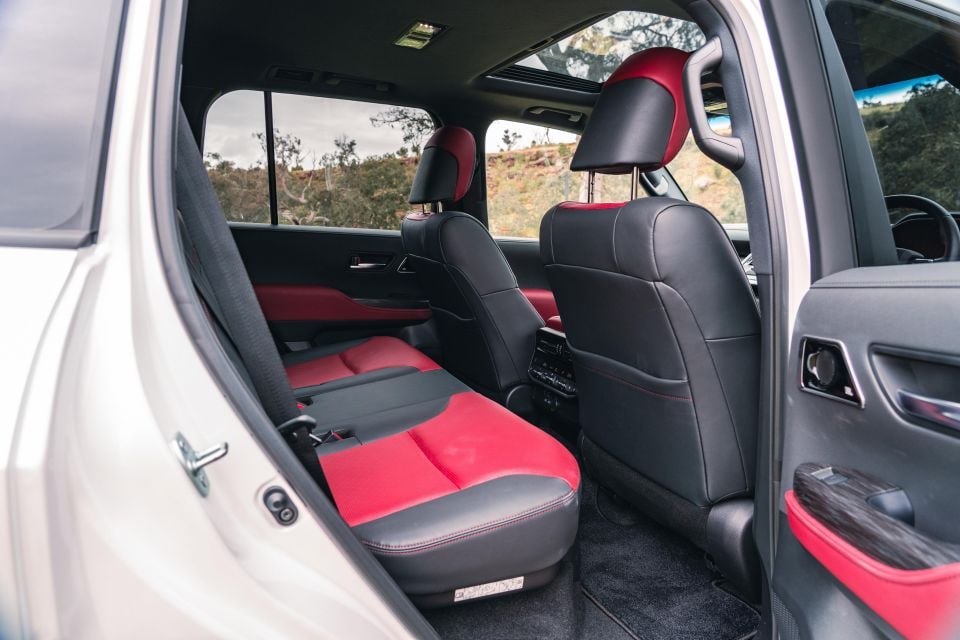
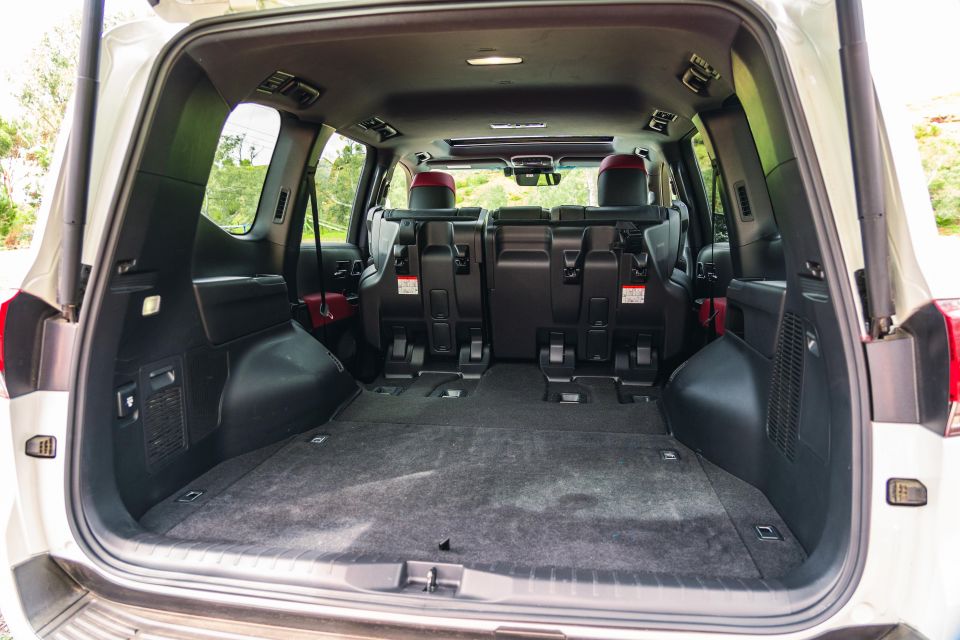
Headroom is excellent and legroom is decent behind tall front passengers, but the floor feels quite high. That means long-legged rear passengers are left feeling like their knees are around their ears, and makes it hard to stretch out on long trips. There’s a significant hump in the centre too, which means the middle seat is best left for small kids.
There’s no third row in the GR Sport, so being able to slide the second row further back would add to its usefulness and allow owners to take full advantage of the space on offer in what’s a massive car.
Claimed boot space is 1153 litres with the second row in place, expanding to a cavernous 2502 litres with them folded and tumbled forward. Although you don’t get sixth and seventh seats, the rear air vents and cupholders carry over.
You’ll be grateful for the powered tailgate, given how large it is. You need plenty of space behind you to open it, but once it’s raised the opening is van-like.
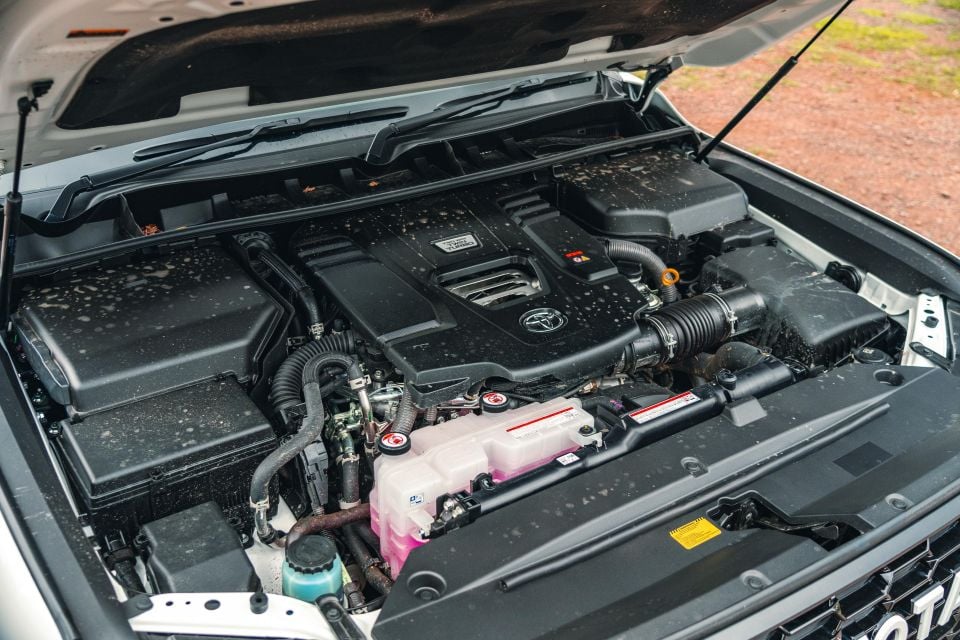
Power in the 2022 Toyota LandCruiser 300 Series comes exclusively from a 3.3-litre twin-turbo V6 diesel engine making 227kW of power and 700Nm of torque, the latter of which is on tap between 1600 and 2600rpm.
Although it’s down 1.2 litres and two cylinders on the outgoing LandCruiser 200 Series, the new engine has 27kW and 50Nm more.
The standard transmission is a 10-speed automatic, and full-time four-wheel drive with a centre differential lock is standard. The GR Sport gains front and rear differential locks, along with its e-Kinetic Dynamic Suspension System (e-KDSS) and adaptive variable suspension.
Combined fuel economy for the 2022 Toyota LandCruiser 300 Series is 8.9L/100km on the combined cycle. We saw 12.4L/100km in a week of mixed driving.
The LC300 holds 110 litres of diesel split across an 80L main tank and 30L sub-tank.
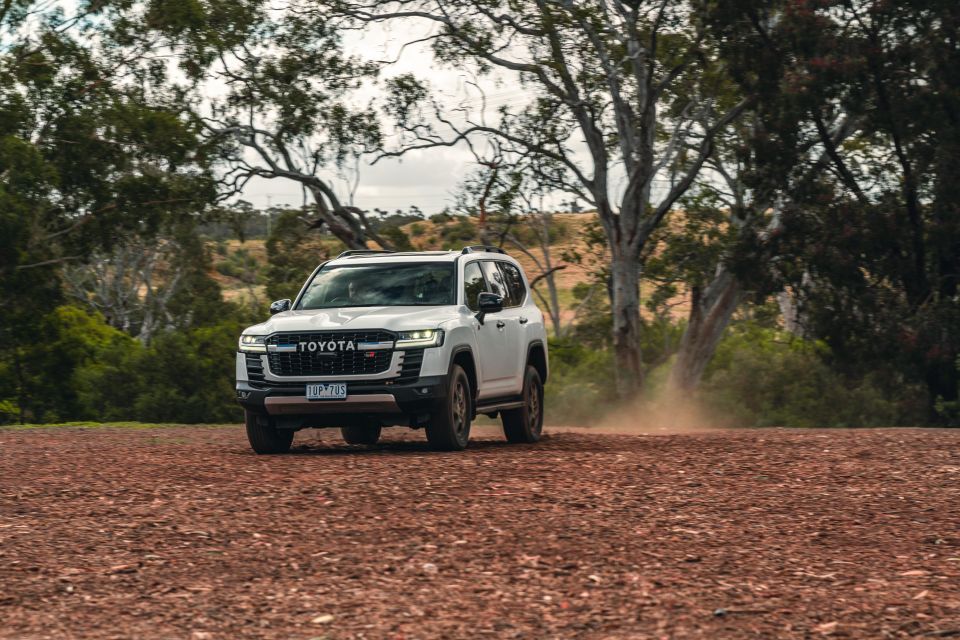
The GR Sport is recognisable as a LandCruiser when you fire it up. The view over the heavily scalloped bonnet makes you feel like the king of the road, and it’s still a big brute to thread through city streets.
It’s a more refined brute than before, though. The engine fires quietly and settles into a smooth idle, and the steering feels lighter and quicker than in the LC200 at low speeds.
A lot of people were worried about the switch from a V8 to the twin-turbo V6 engine used in the new LandCruiser. On first impression, the new engine covers for its smaller displacement with smooth low-down responses and impressive punch on the move.
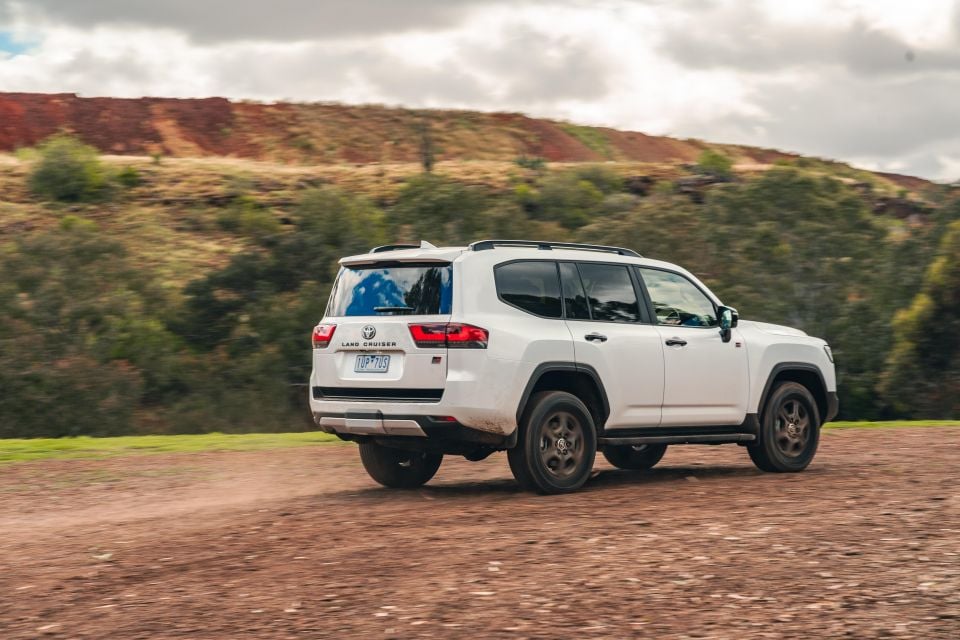
Some small-displacement turbocharged engines have a moment of lag, before surging forward when the revs hit a certain mark and the boost kicks in. The engine in the LC300 feels linear on constant throttle inputs, giving you back exactly what you ask for rather than lurching forward as the turbochargers kick in.
That makes it easier to manage in traffic, and a better companion when you need to precisely dole out the engine’s torque on tight off-road trails.
Put your foot down and, once the 10-speed automatic has sorted itself out, the GR Sport gets a move on. It feels fast off the mark given its size and weight, and offers plenty of punch for highway overtaking. The transmission is smart enough to hang in the peak torque band between 1600 and 2600rpm, and there’s enough gears to make sure you’re never far from that band.
It’ll take a long time to know if the new engine is reliable as its predecessor, but anyone worried about how it performs should breathe easy.
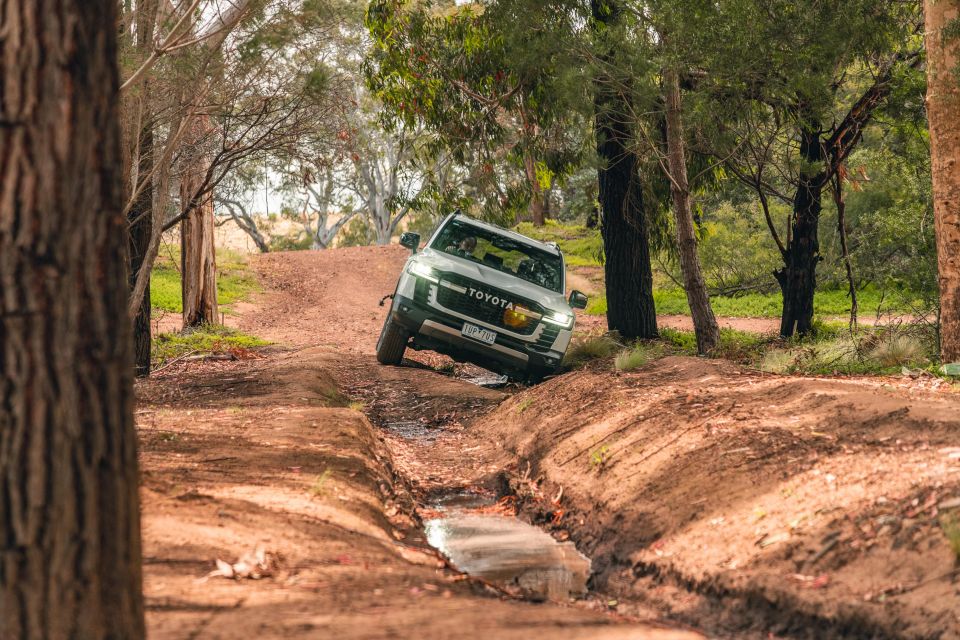
Where expert car reviews meet expert car buying – CarExpert gives you trusted advice, personalised service and real savings on your next new car.
One of the calling cards of the GR Sport is its electronic Kinetic Dynamic Suspension System (that’s e-KDSS to you and me), which can independently lock and unlock the front and rear stabiliser bars. In conjunction with the car’s adaptive dampers, the system is designed to deliver a combination of mogul-crushing wheel articulation and more car-like on-road dynamics.
There is a definite difference between the drive modes, although that’s down to the adaptive dampers. In Comfort the car feels like a bit of a barge, floating along and letting the body make one, two, three movements over highway crests and dips. Flicking through Normal, Sport, and Sport Plus gradually tightens up the body control.
Although the new LC300 feels less boat-like than the LC200, with better ride compliance and better body control, the e-KDSS feels quite subtle in its operation compared to the active anti-roll bars you can now get in Volkswagen Group products.
Check out our video for a representation of the difference, but our team noted the LandCruiser VX without adaptive dampers but no e-KDSS rolled less than the more expensive and (supposedly) more sophisticated GR Sport in the corners.
Where you can feel the 48V anti-roll system in a Volkswagen Touareg pushing hard to prevent roll in its most aggressive mode, holding the car in corners, the e-KDSS in the LandCruiser isn’t as effective. It would be interesting to see what else Toyota could do with the system, or whether the system could be linked more overtly to the Sport drive mode.
Chalk the system’s ceiling down to the limitations of a body-on-frame architecture, even one as modern as the TNGA setup in the latest LandCruiser. The trade off? The LandCruiser is still incredibly capable off-road.
With a locking centre differential, locking front and rear differentials, low-range, and a staggering array of electric assists to help take you further off the beaten path, the GR Sport is one of the most capable cars we’ve tested at the Werribee four-wheel drive park.
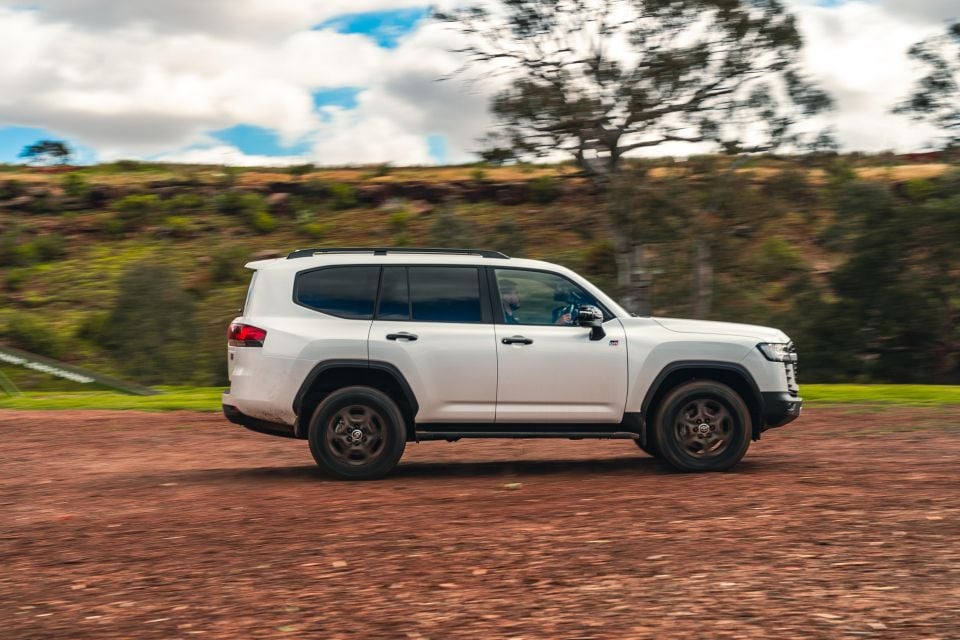
It waltzed up the log climb, and offered Ram TRX-rivalling levels of wheel articulation through the offset moguls.
The GR Sport has bumpers designed to be more comfortable off-road than those of the more luxurious Sahara ZX, but it shares the same 235mm of ground clearance. Its approach angle is 32 degrees, and its departure angle is 25 degrees.
When you’re done getting dirty, the LandCruiser turns into a comfortable, quiet highway cruiser. There’s hardly any wind or road noise in the cabin at 100km/h on average Australian roads, and the engine sits just above idle.
Unlike its predecessor, the LC300 also has a relatively up-to-date suite of active driver assists. It will maintain a gap to the car in front, and now has a system that will actively steer keep you in your lane – but its lane-keeping assist is still brake-based, rather than steering you back into the lane as you drift.
The suite of systems are an improvement over the last car, and the adaptive cruise in particular is well-tuned, but they also aren’t exactly ground-breaking at $135,000 before on-road costs.
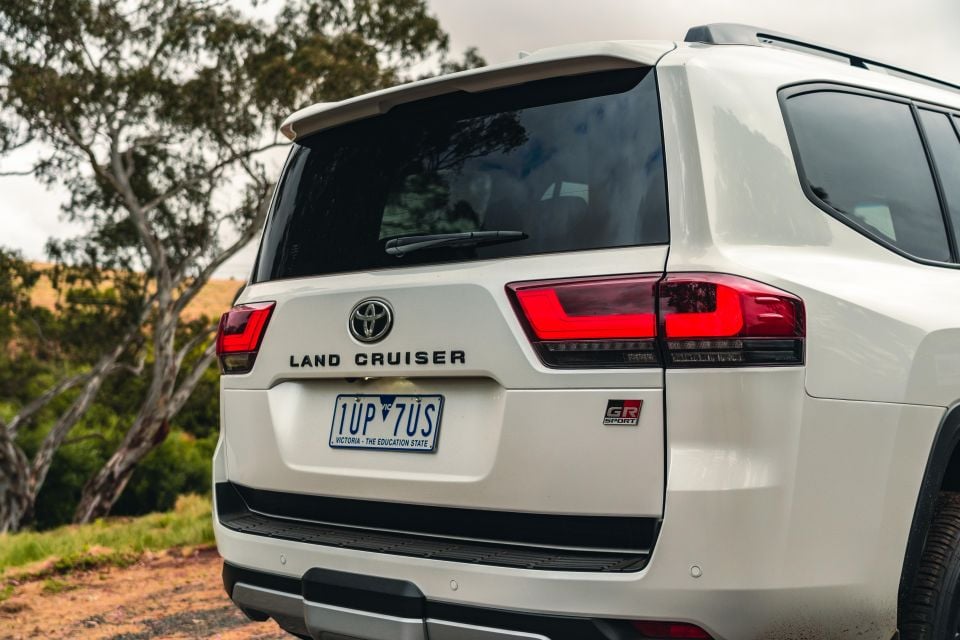
The LandCruiser is backed by a five-year, unlimited-kilometre warranty, with seven-year coverage on the powertrain.
Toyota Service Advantage covers capped-price servicing for the first 10 services at a cost of $375 each. Intervals are every six months or 10,000km – whichever comes first.
Owners will be able to extend their warranty on the engine and driveline to seven years by sticking to the service schedule.
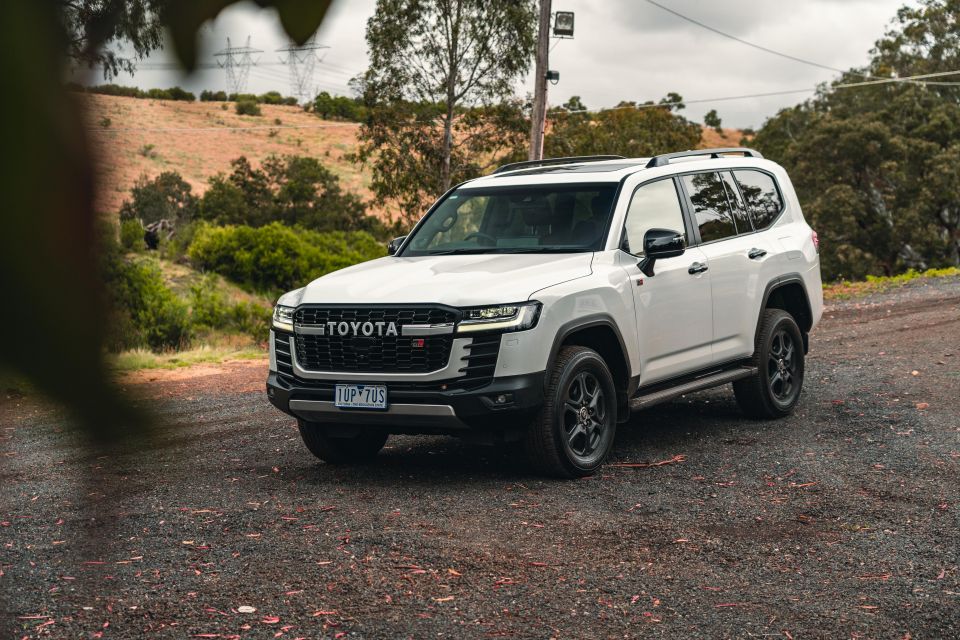
Toyota has done an incredible job of modernising the LandCruiser without undermining what has made it so popular.
It still feels like it’ll take you around Australia without breaking a sweat, and it’s still the least pretentious luxurious, comfortable four-wheel drive money can buy. Sure, you could get a BMW or Range Rover, but they say something very different about you to the LandCruiser.
Having now driven the VX, Sahara ZX, and GR Sport, it’s the GR Sport that turns the most heads. It looks great, with a level of presence usually reserved for Ford Ranger Raptors, and shows Toyota was serious about making its whole range a bit sexier and sportier. It’s the LandCruiser that would be getting my money.
The biggest sticking point is the price. There’s no question the off-road technology and strength of the LandCruiser name are both worth close to $140,000, but the GR Sport shares a huge chunk of its infotainment with a $30,000 economy hatch, and there’s more luxurious options to be had elsewhere in the same price range.
Criticising the price is almost moot though, given the LandCruiser is essentially sold out for the next nine months, and people are already listing the first 300 Series models to arrive in Australia for upwards of $200,000.
In other words, get in quick if you want one. It might be pricey, but it’s hot property – and for good reason.

Click the images for the full gallery
Where expert car reviews meet expert car buying – CarExpert gives you trusted advice, personalised service and real savings on your next new car.
Scott Collie is an automotive journalist based in Melbourne, Australia. Scott studied journalism at RMIT University and, after a lifelong obsession with everything automotive, started covering the car industry shortly afterwards. He has a passion for travel, and is an avid Melbourne Demons supporter.


Max Davies
2 Months Ago


Matt Campbell
2 Months Ago
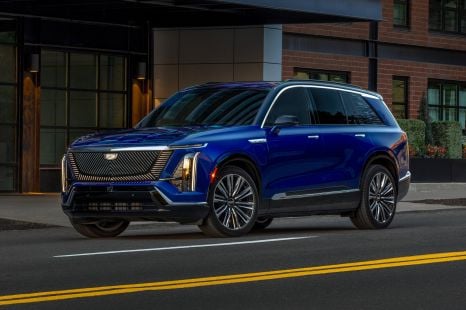

William Stopford
2 Months Ago
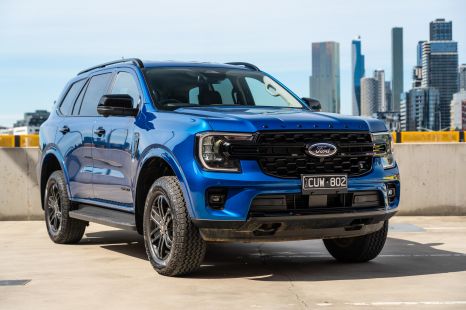

Josh Nevett
2 Months Ago


Max Davies
29 Days Ago
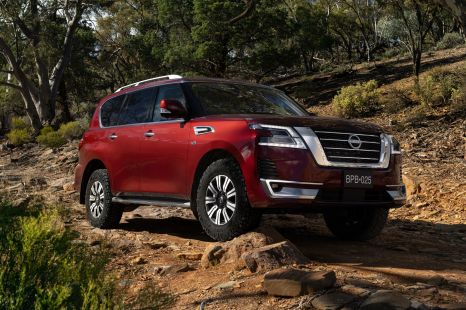

CarExpert.com.au
17 Days Ago